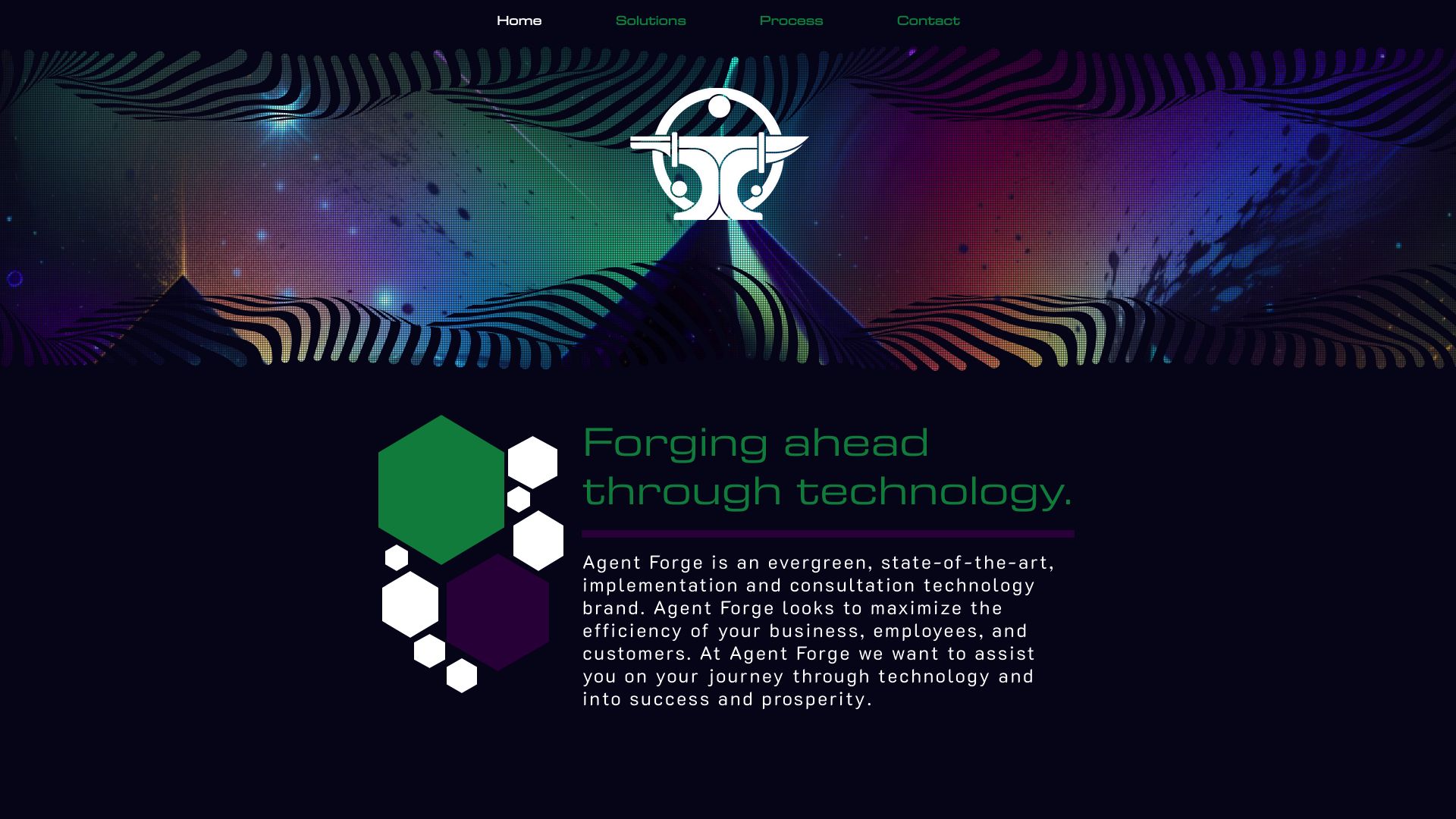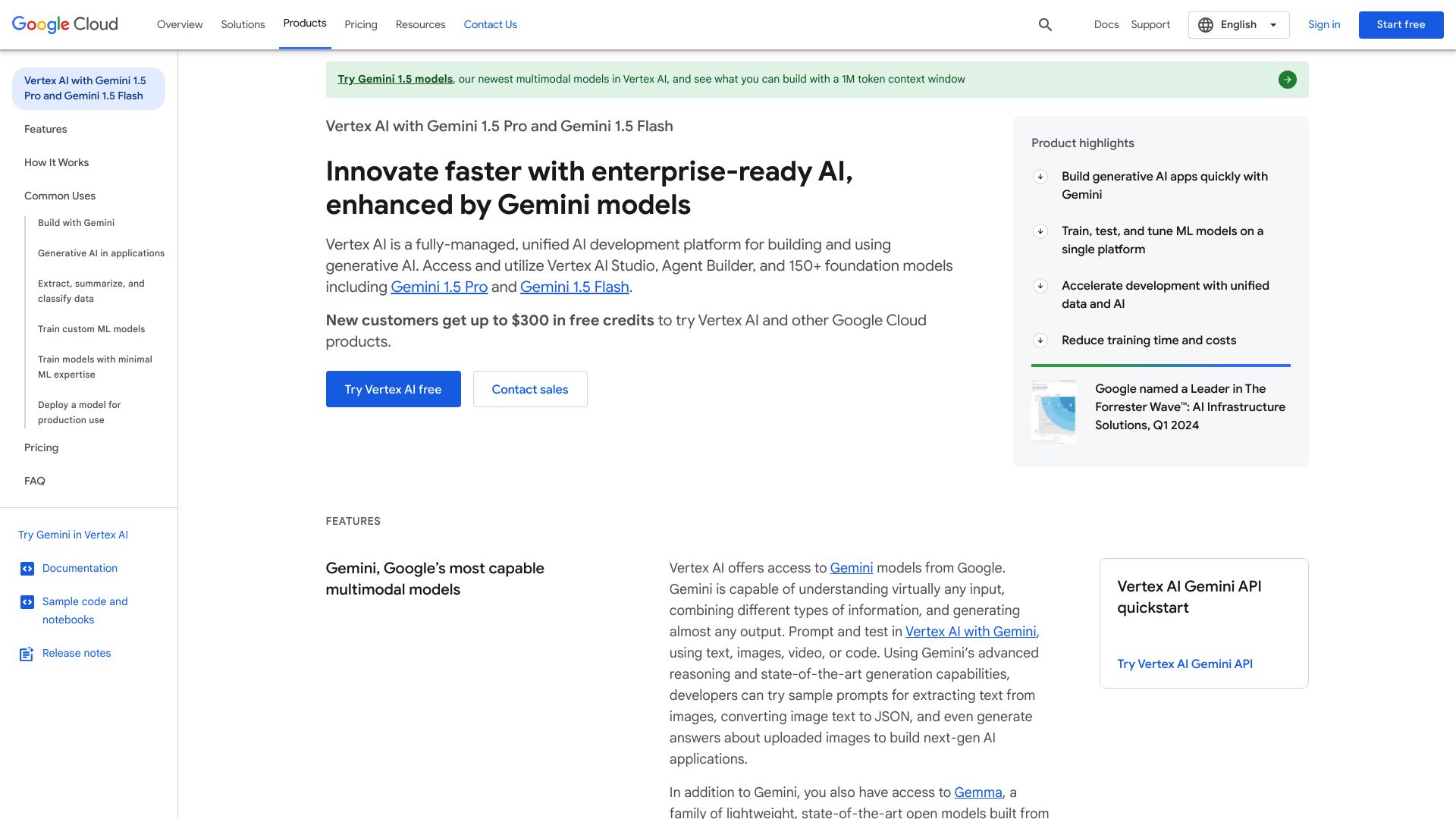Agent Forge vs. Vertex AI: Comparing Open-Source and Enterprise AI Platforms
AI development platforms revolutionize how businesses create intelligent systems, automate processes, and unlock new capabilities. This comparison between Agent Forge vs. Vertex AI examines Agent Forge, an open-source framework for building autonomous agents, and Vertex AI, Google’s enterprise-grade machine learning platform.
We evaluate their strengths, limitations, and ideal use cases to help you choose the right tool for your AI projects. Beyond these options, we introduce SmythOS, a versatile platform that combines powerful features with user-friendly design, offering a compelling alternative for businesses of all sizes. Whether you’re a seasoned developer or new to AI, this guide provides insights to navigate the evolving landscape of AI development tools.
Agent Forge Overview
Agent Forge empowers developers to build AI-powered autonomous agents and cognitive architectures. This open-source Python framework accelerates the development of intelligent systems capable of automating tasks and workflows.


Agent Forge supports major Large Language Models like Claude, GPT, and self-hosted options via Oobabooga. The framework’s flexible agent memory management, powered by ChromaDB, enables persistent context and learning. Developers can orchestrate complex workflows using multi-agent scripts and leverage pre-built agent templates to jumpstart projects.
Agent Forge supports major Large Language Models like Claude, GPT, and self-hosted options via Oobabooga. The framework’s flexible agent memory management… enables persistent context and learning.
A key strength of Agent Forge lies in its extensibility. The platform facilitates easy integration of custom data sources and third-party APIs, allowing developers to tailor agents to specific business needs. Shared utility classes for storage, tools, and Natural Language Processing tasks further streamline the development process.
While Agent Forge offers powerful capabilities for experienced developers, it lacks some features that could broaden its appeal. The absence of a visual builder or no-code editor limits accessibility for non-technical users. Additionally, the framework does not provide built-in explainability tools or a dedicated debug mode, which could pose challenges for troubleshooting complex agent behaviors.
Agent Forge positions itself as an accessible playground for AI experimentation and development. Its modular and extensible nature makes it well-suited for long-term AI projects, from prototyping assistants and chatbots to automating business workflows. However, users should be prepared for a more code-centric approach compared to some alternatives in the market.
Vertex AI Overview
Vertex AI empowers developers and businesses to harness the power of machine learning and artificial intelligence. Google’s comprehensive platform streamlines the entire ML lifecycle, from data preparation to model deployment and management.


Vertex AI shines in its ability to handle complex AI tasks. The platform’s crown jewel, the Gemini multimodal model, processes text, images, audio, and video inputs. This versatility opens doors for developers to create sophisticated AI applications across industries. Vertex AI also offers specialized models like Imagen for text-to-image generation and MedLM for healthcare-specific AI tasks.
Vertex AI shines in its ability to handle complex AI tasks. The platform’s crown jewel, the Gemini multimodal model, processes text, images, audio, and video inputs.
The platform’s Model Garden provides a rich ecosystem of pre-trained models, including Google’s proprietary offerings and select open-source options. Users can customize these models through fine-tuning, improving cost-efficiency and response times. Vertex AI’s emphasis on MLOps ensures smooth model deployment and management, with features like a centralized Model Registry and automated monitoring tools.
While Vertex AI boasts powerful capabilities, its complexity may present a learning curve for newcomers to AI development. The platform caters primarily to enterprise-level needs, which could be overkill for smaller projects or individual developers. Additionally, as a Google Cloud product, users should consider potential lock-in to the Google ecosystem when evaluating long-term AI strategy.
Feature Comparison
Agent Forge and Vertex AI offer distinct approaches to AI development, with notable feature gaps between them. Agent Forge provides a flexible, open-source framework for building autonomous agents, while Vertex AI delivers a comprehensive, enterprise-grade machine learning platform.
Agent Forge excels in its modular design and support for multi-agent collaboration. Developers can create complex AI workflows using pre-built templates and orchestrate multiple agents to work together. However, Agent Forge lacks a visual builder or no-code editor, limiting accessibility for non-technical users. It also doesn’t offer built-in explainability tools or a dedicated debug mode, which can complicate troubleshooting.
Vertex AI, in contrast, provides a robust set of MLOps features absent in Agent Forge. These include a centralized Model Registry, automated monitoring tools, and seamless integration with Google Cloud services. Vertex AI’s Gemini multimodal model processes various input types, surpassing Agent Forge’s text-focused capabilities. However, Vertex AI’s enterprise focus may present a steeper learning curve and potential vendor lock-in compared to Agent Forge’s open-source flexibility.
| Agent Forge | Vertex AI | SmythOS | |
|---|---|---|---|
| CORE FEATURES | |||
| Visual Builder | ❌ | ✅ | ✅ |
| No-Code Options | ❌ | ❌ | ✅ |
| Explainability & Transparency | ❌ | ✅ | ✅ |
| Debug Tools | ❌ | ✅ | ✅ |
| Multimodal | ❌ | ✅ | ✅ |
| Audit Logs for Analytics | ❌ | ❌ | ✅ |
| Work as Team | ❌ | ✅ | ✅ |
| Bulk Work | ❌ | ✅ | ✅ |
| Agent Work Scheduler | ❌ | ✅ | ✅ |
| Logs & Monitoring | ❌ | ✅ | ✅ |
| SECURITY | |||
| Constrained Alignment | ❌ | ✅ | ✅ |
| Data Encryption | ❌ | ✅ | ✅ |
| OAuth | ❌ | ✅ | ✅ |
| IP Control | ❌ | ✅ | ✅ |
| COMPONENTS | |||
| Foundation AIs | ❌ | ✅ | ✅ |
| Huggingface AIs | ❌ | ❌ | ✅ |
| Zapier APIs | ❌ | ❌ | ✅ |
| All other APIs, RPA | ❌ | ✅ | ✅ |
| Classifiers | ❌ | ✅ | ✅ |
| Logic | ❌ | ✅ | ✅ |
| Data Lakes | ❌ | ✅ | ✅ |
| DEPLOYMENT OPTIONS (EMBODIMENTS) | |||
| Deploy as API | ❌ | ✅ | ✅ |
| Deploy as Webhook | ❌ | ✅ | ✅ |
| Staging Domains | ❌ | ✅ | ✅ |
| Production Domains | ❌ | ✅ | ✅ |
| API Authentication (OAuth + Key) | ❌ | ✅ | ✅ |
| Deploy as Site Chat | ❌ | ✅ | ✅ |
| Deploy as Scheduled Agent | ❌ | ✅ | ✅ |
| Deploy as GPT | ❌ | ✅ | ✅ |
| Scalability | ❌ | ✅ | ✅ |
| DATA LAKE SUPPORT | |||
| Hosted Vector Database | ❌ | ✅ | ✅ |
| Sitemap Crawler | ❌ | ❌ | ✅ |
| YouTube Transcript Crawler | ❌ | ❌ | ✅ |
| URL Crawler | ❌ | ✅ | ✅ |
| Word File Support | ❌ | ✅ | ✅ |
Best Alternative to Agent Forge and Vertex AI
SmythOS stands out as the superior alternative to Agent Forge and Vertex AI for agentic AI automation. Our platform combines powerful capabilities with unmatched ease of use, making advanced AI accessible to users of all skill levels.
We offer a comprehensive visual builder that allows you to create complex AI workflows through an intuitive drag-and-drop interface. This sets us apart from Agent Forge’s code-centric approach and Vertex AI’s steeper learning curve. With SmythOS, you can rapidly prototype and deploy AI agents without extensive programming knowledge.
SmythOS stands out as the superior alternative to Agent Forge and Vertex AI for agentic AI automation. Our platform combines powerful capabilities with unmatched ease of use…
Our platform provides unparalleled flexibility in deployment options. You can seamlessly integrate SmythOS agents into your existing systems as APIs, webhooks, chatbots, or scheduled tasks. This versatility surpasses the more limited deployment choices of our competitors.
SmythOS excels in multi-agent collaboration, allowing you to orchestrate teams of AI agents to tackle complex tasks. While Agent Forge offers some multi-agent capabilities, our platform takes it further with advanced features for agent communication and coordination. Vertex AI, despite its strengths in MLOps, lacks robust support for autonomous agent collaboration.
We prioritize transparency and control in AI operations. Our platform includes powerful debugging tools and detailed logs, giving you deep insights into agent behavior. This level of visibility is not matched by Agent Forge, and surpasses Vertex AI’s monitoring capabilities. With SmythOS, you can build AI systems you truly understand and trust.
Conclusion
Agent Forge and Vertex AI offer distinct approaches to AI development, each with unique strengths. Agent Forge provides a flexible, open-source framework for building autonomous agents, ideal for developers seeking customization and experimentation. Vertex AI delivers a comprehensive, enterprise-grade machine learning platform with robust MLOps features and advanced multimodal capabilities.
While both platforms have their merits, SmythOS emerges as the superior choice for businesses and developers looking to harness AI’s full potential. Our platform combines the best of both worlds – the flexibility of Agent Forge and the power of Vertex AI – while offering unparalleled ease of use and deployment options.
SmythOS’s drag-and-drop interface and extensive integration ecosystem democratize AI development, making it accessible to both technical and non-technical users. Our platform supports multi-agent collaboration, offers pre-built templates, and provides versatile deployment options across various platforms. These features, coupled with our commitment to security and scalability, position SmythOS as the ideal solution for businesses of all sizes.
Experience the future of AI development with SmythOS. Create a free account today and discover how our platform can revolutionize your workflow, boost productivity, and drive innovation in your organization. With our 30-day money-back guarantee and unlimited agent creation, there’s never been a better time to explore the possibilities of AI-powered automation.
Last updated:
Disclaimer: The information presented in this article is for general informational purposes only and is provided as is. While we strive to keep the content up-to-date and accurate, we make no representations or warranties of any kind, express or implied, about the completeness, accuracy, reliability, suitability, or availability of the information contained in this article.
Any reliance you place on such information is strictly at your own risk. We reserve the right to make additions, deletions, or modifications to the contents of this article at any time without prior notice.
In no event will we be liable for any loss or damage including without limitation, indirect or consequential loss or damage, or any loss or damage whatsoever arising from loss of data, profits, or any other loss not specified herein arising out of, or in connection with, the use of this article.
Despite our best efforts, this article may contain oversights, errors, or omissions. If you notice any inaccuracies or have concerns about the content, please report them through our content feedback form. Your input helps us maintain the quality and reliability of our information.
